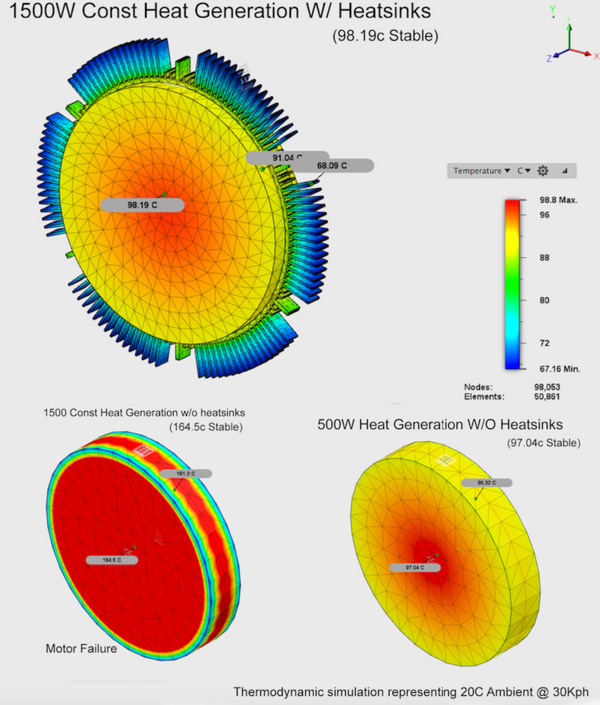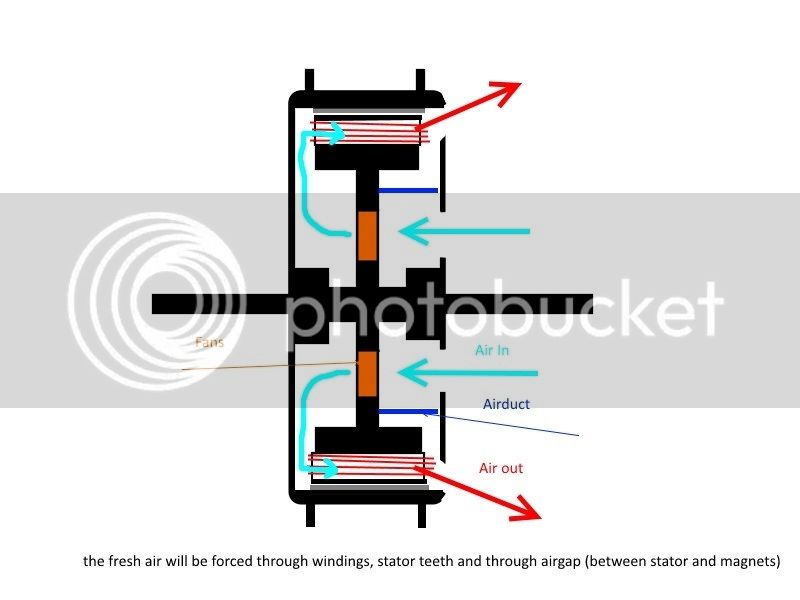Ohbse
10 kW
Totally agree with John. If you're on the verge of constantly smoking a MXUS, even with the very considerable advantage of FF and Hubsinks, then you're using the wrong motor for your application.
You're saying you'd pay double for a motor with water cooling, why not pay only 20-30% more and get a substantially more efficient motor like a 50mm QS v3? Utilise your existing hubsinks, add some more FF and you'll have increased thermal mass, increased surface area to dissipate the heat, but critically you'll be generating substantially less heat in the first place. You'll go faster or use less energy for the same activity, all without the added complications of water, hoses, radiators, pumps and control headaches.
The answer is never to add inactive mass to a system to try to overcome some shortcoming. Taking that same mass/complexity and adding copper/magnet area will always deliver a superior solution. More active mass under less stress produces less heat as well as being able to dissipate it quicker.
You're saying you'd pay double for a motor with water cooling, why not pay only 20-30% more and get a substantially more efficient motor like a 50mm QS v3? Utilise your existing hubsinks, add some more FF and you'll have increased thermal mass, increased surface area to dissipate the heat, but critically you'll be generating substantially less heat in the first place. You'll go faster or use less energy for the same activity, all without the added complications of water, hoses, radiators, pumps and control headaches.
The answer is never to add inactive mass to a system to try to overcome some shortcoming. Taking that same mass/complexity and adding copper/magnet area will always deliver a superior solution. More active mass under less stress produces less heat as well as being able to dissipate it quicker.



